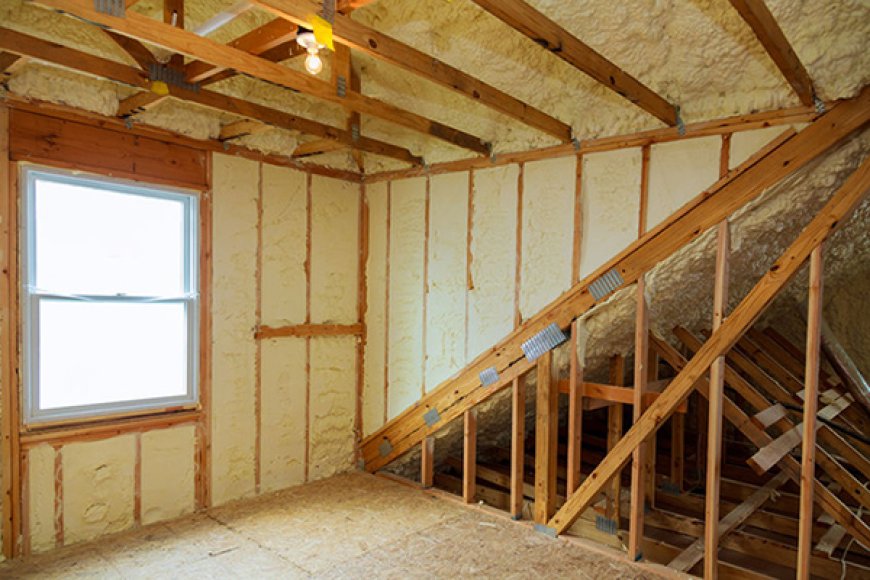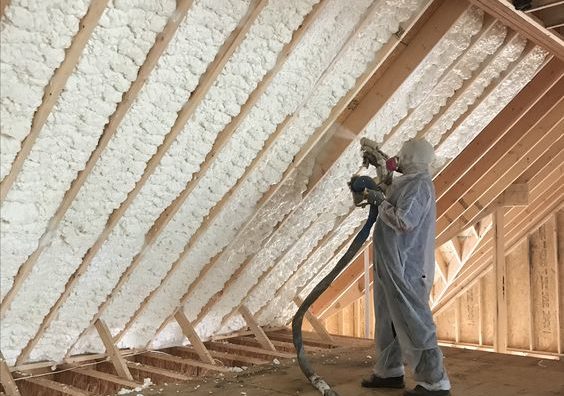The Role of Residential Insulation in Creating Healthier Living Spaces

Residential insulation has a direct influence on indoor health. It goes beyond just reducing utility bills or keeping the home warm in winter. At its core, insulation is a shield that protects people from health-compromising factors like mold, pollutants, outdoor allergens, humidity imbalance, and uncomfortable temperature swings. Among the most critical areas in a home is the attic, which plays a central role in regulating air flow, temperature consistency, and moisture control. This is why working with an experienced attic insulation contractor matters.
Right from the start, installing or upgrading attic insulationespecially spray foam attic insulationis one of the most effective ways to create a healthier, safer living environment. Spray foam insulation in Seattle, when properly applied, creates an air-tight seal that minimizes exposure to outdoor pollutants and contaminants, reduces the risk of mold, and improves indoor air quality.
The Impact of Attic Insulation on Health and Air Quality
Most homeowners arent aware of how much their attic conditions affect their overall indoor environment. Poor attic insulation allows outdoor air, dust, and moisture to seep into living spaces. This leads to higher humidity, irregular temperatures, and increased allergensespecially during seasonal changes. These factors contribute to respiratory issues, skin irritation, and sleep disruption, especially in children and older adults.
Professionally installed attic insulation helps isolate the home from external weather and pollutants. For homes in humid regions, materials like spray foam attic insulation are especially valuable because they dont absorb moisture and they seal cracks that allow condensation to form. That moisture, if unchecked, becomes a breeding ground for bacteria, dust mites, and moldall of which aggravate respiratory conditions like asthma and allergies.
Thermal comfort also plays a key role in physical health. Living in a home with unstable indoor temperatures can lead to fatigue, poor sleep, and even cardiovascular stress. Proper attic insulation reduces temperature fluctuations and keeps the homes internal climate balanced year-round.
Technical Performance and Health-Oriented Insulation Properties
When choosing insulation with a focus on health, certain specifications matter more than others. Thermal resistance (R-value), air sealing capacity, mold resistance, and off-gassing levels (VOC emissions) must be reviewed in detail. Here's how the most common insulation materials compare:
Health-Based Comparison of Insulation Types
|
Insulation Type |
Air Quality Impact |
Moisture Resistance |
Mold Prevention |
VOC Emissions |
Noise Barrier |
Durability |
|---|---|---|---|---|---|---|
|
Fiberglass Batt |
Moderate |
Low |
Low |
Low |
Low |
10-15 yrs |
|
Cellulose |
Moderate |
Moderate |
Moderate |
Moderate |
Moderate |
20 yrs |
|
Spray Foam (Closed-Cell) |
High |
High |
High |
Very Low |
High |
30+ yrs |
|
Mineral Wool |
Moderate |
High |
Moderate |
Low |
High |
2530 yrs |
The data clearly supports the use of best residentialspray foam insulation and attic insulation when the goal is a healthier living space. It excels in air sealing, moisture blocking, and preventing airborne pollutants from entering living zones.
Technical Specification Table
|
Feature |
Spray Foam Insulation (Closed-Cell) |
|---|---|
|
R-Value per Inch |
R-6.5 to R-7.5 |
|
Air Leakage Resistance |
98%100% |
|
Mold Resistance Score (010) |
10 |
|
VOC Emissions After Curing |
< 0.5 g/m |
|
Moisture Absorption |
<1% |
|
Noise Reduction Coefficient (NRC) |
0.700.90 |
These specs are particularly useful in homes with people who suffer from asthma, chemical sensitivities, or chronic sinus issues. The closed-cell structure resists both air and water infiltration, which is critical for long-term health.
Why Attic Insulation Matters More Than You Think
The attic is often the most neglected part of the home, yet it has a disproportionate effect on comfort and air quality. Heat naturally rises, and without proper insulation in the attic, it escapes during winter and enters during summer, leading to large temperature variances. That instability puts pressure on HVAC systems, leading to increased humidity and poor airflowboth of which worsen indoor air quality.
In addition, poorly insulated attics become a nesting ground for pests. Mice, bats, and insects often enter through gaps and bring bacteria and allergens with them. Proper attic insulation installation blocks these entry points and seals off the attic from exposure to unwanted contaminants.
Homes with high-quality attic insulation also have lower radon infiltration rates. Radon is a naturally occurring radioactive gas that seeps from soil into buildings and contributes to long-term respiratory risks. A well-insulated and sealed attic forms part of the homes defense system against this invisible threat.
Things to Consider Before Making a Decision
Before replacing or installing insulation, homeowners need to think beyond the material cost. The following factors help align insulation choices with health and safety goals:
-
Climate and Weather Patterns Hot, humid areas benefit from closed-cell foam due to its vapor barrier properties, while dry climates may allow more material flexibility.
-
House Age and Construction Older homes often lack air sealing, making foam insulation a better fit for minimizing drafts and moisture intrusion.
-
Ventilation and Airflow Proper attic ventilation is essential, even with insulation. Over-insulation without airflow can trap humidity and lead to condensation.
-
Material Longevity vs. Initial Cost Spray foam costs more upfront but lasts longer and delivers better health protection over time.
-
Expertise of Installer Always work with a skilled attic insulation contractor who understands building science and follows health-safe application standards.
Homeowners should also ask for post-installation tests like blower door testing or infrared imaging to ensure the installation is effective and not just cosmetic.
Common Questions About Health and Insulation
Is it worth replacing attic insulation solely for health benefits? Yes, especially in homes with allergies, asthma, or moisture problems. Upgrading attic insulation can reduce dust, mold, and temperature instabilityfactors that influence daily health.
Does spray foam release harmful chemicals over time? Closed-cell spray foam releases minimal VOCs after it cures, typically within 24 hours. After that, its inert and does not emit harmful chemicals.
How does insulation help reduce mold growth? Insulation controls the temperature and humidity levels that mold needs to grow. Spray foam also blocks water vapor, which eliminates one of the primary mold growth conditions.
What kind of insulation is best for allergy-prone homes? Homes with allergy-prone residents should use closed-cell spray foam for superior air sealing, low VOC emissions, and mold-resistant properties.
How do I know if my insulation is affecting my indoor air quality? Signs include musty odors, visible mold, cold drafts, high energy bills, or consistent respiratory symptoms. An inspection by an insulation specialist can confirm the condition.
Additional FAQs
How long does it take to install attic insulation? Typically, 12 days depending on attic size and complexity. Spray foam takes longer due to curing time but delivers better sealing and performance.
Can insulation improve noise levels inside the home? Yes. Closed-cell spray foam and mineral wool both reduce sound transmission. This creates a quieter indoor space, which supports better mental and emotional health.
What happens if I dont replace old attic insulation? Old or degraded insulation becomes a haven for dust, pests, and mold. It also fails to regulate temperature or block outdoor air, which compromises health and comfort.
Will insulation lower my energy bills significantly? Yes. Efficient attic insulation reduces heat transfer and HVAC workload, which lowers monthly heating and cooling costs by up to 2030%.
Can I combine insulation types for better results? Yes. Professionals sometimes use a hybrid approachfor example, foam to air seal and fiberglass to add R-value. This must be installed carefully to avoid moisture traps.
Final Thoughts
Insulation, especially in the attic, isnt just about staying warm or reducing energy bills. Its a key layer of protection between the people in your home and the environmental hazards outside. Choosing the right insulation and working with an experienced attic insulation contractor ensures that your home remains safe, stable, and comfortable. Whether you're dealing with allergy triggers, mold concerns, or just want a quieter, healthier indoor space, upgrading your attic insulation delivers real and lasting health benefits.
Always take time to assess your current insulation, consider your regions climate, and evaluate installation methods. In the long run, the quality of your insulation will shape not only your homes comfort but your familys well-being.

Reviewer: Olivia Thompson has spent 10 years working in spray foam insulation, helping companies grow their visibility. She reviewed this article and provided valuable suggestions on how to better align the content with the needs and expectations of customers, ensuring it resonates with the target audience.









































